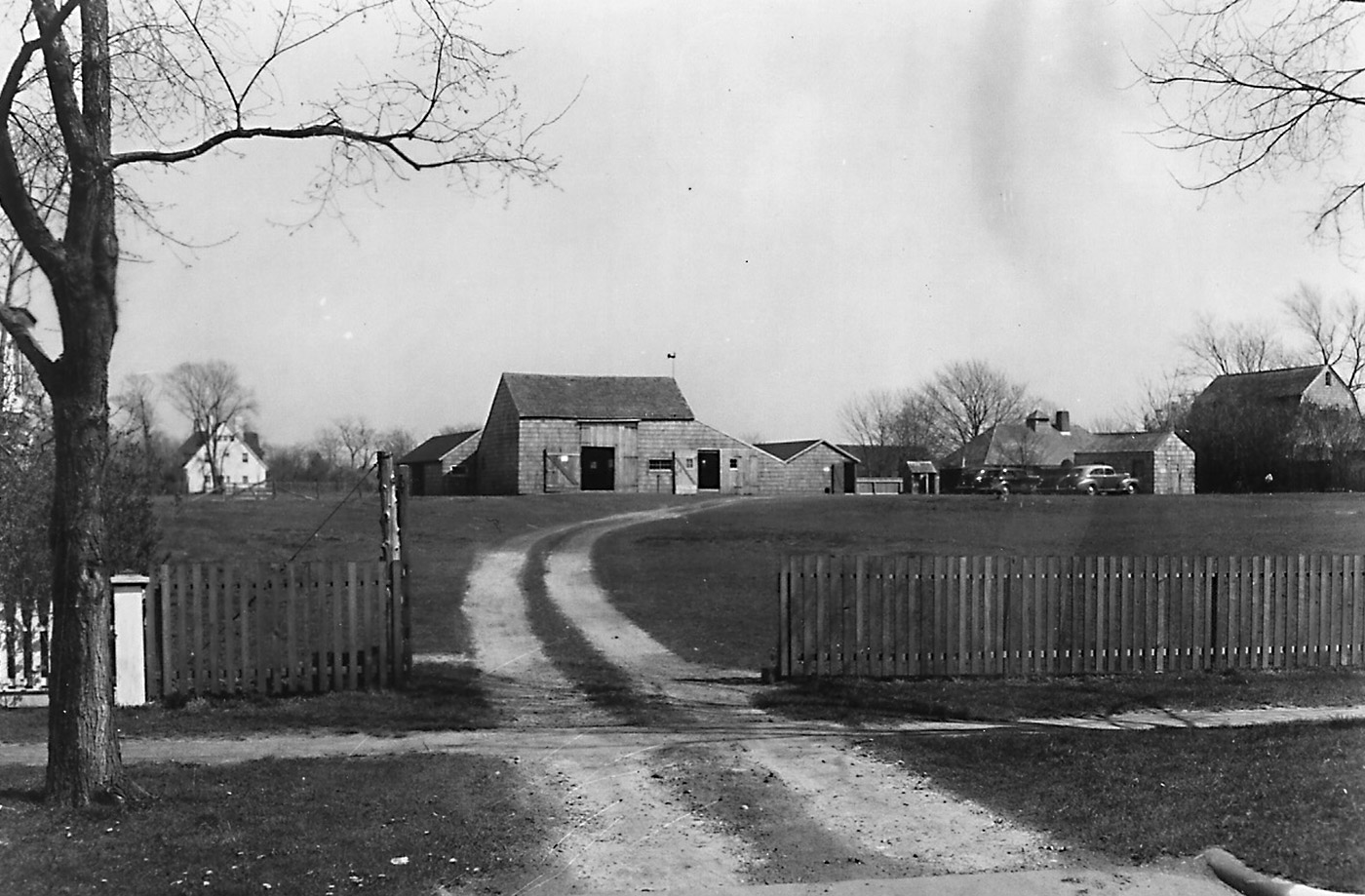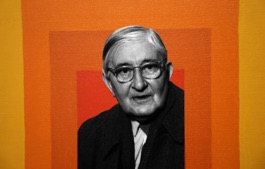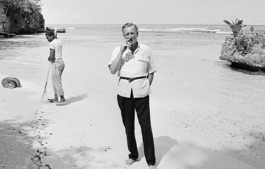
Remaking
History
Through a groundbreaking partnership with the East Hampton Historical Society, Ralph Lauren looks to preserve a bit of our nation’s past
East Hampton, New York, is a town of dichotomies. Although it’s probably thought of by most as a summer resort for the rich and famous, who come for the white sandy beaches, the unspoiled bay and the other rich and famous, this sleepy enclave is actually a year-round home to many and has a history that predates that of the United States. Elm-covered Main Street is a sort of microcosm of the town: Lined with the same high-end shops you’d find on Manhattan’s Fifth Avenue, it also has a quaint town green with a small cemetery, an even smaller Episcopal church nearby and several historic buildings that look like they could be on a Hollywood set. Abutting the town green and adjacent to the church is the Mulford farmhouse, a structure more than 300 years old that’s listed on the National Register of Historic Places. The fact that it remains amid the retail shops symbolizes the yin and yang of this Long Island village.
“Mulford Farm is a pretty amazing property for many reasons,” explains Richard Barons, executive director of the East Hampton Historical Society. “First off, how many resort communities can boast such a historic property right on the town square? The question everybody seems to ask, really, is ‘Who didn’t sell when they should have?’” As it turns out, it was the Mulford family who refused to cash in when the property values around them began to explode. The farm was in the very same family for almost 300 years. In between, East Hampton changed from a sleepy fishing village to a Revolutionary War hotbed to a farming community to its present incarnation as a bucolic escape for stylish city dwellers. Ironically, or perhaps fittingly, it is one of the most stylish New Yorkers, Ralph Lauren, who has come to the rescue of this little farmhouse, which had fallen into disrepair in recent years.
Ralph Lauren Corporation first established itself in East Hampton by opening its Country Store on Main Street in 1992. Back then, the town was more residential than resort; but as the population and number of vacationers have grown over the years, so has the company’s presence. The opening of the Ralph Lauren children’s store in the summer of 2007 showcased for Barons Mr. Lauren’s interest in history. “The structure that houses the children’s store is actually the oldest surviving building in East Hampton. It still contains the framework of a 1550s settler’s home,” Barons says. (Other sources estimate that the building was erected in the mid-1600s.) “When [Ralph Lauren Corporation] bought the [building] and began renovations, we noticed that some old beams and bricks were being discarded. This was not at all in keeping with the Ralph Lauren that we knew, the company that fits so well into our community. So we made some calls, and sure enough, the beams were replaced, intact, and made an integral part of the store experience. We knew then that the historical society and Ralph Lauren were a perfect match.”
When it became evident that Mulford Farm was in need of a benefactor, Barons knew exactly where to look. “It all seemed like such a perfect fit, as long as the tailor would measure us up,” he says. So in summer 2008, Ralph Lauren Corporation made a four-year commitment to assist financially in the preservation of the Mulford Farm homestead and land, with a plan for a much longer partnership with the East Hampton Historical Society. “The donation [from Ralph Lauren Corporation] allows us to finally revamp the place and complete our project goal of restoring the farm to the era of the Revolutionary War, the time when many of our residents had to flee the British occupation and live in Connecticut,” Barons says. With an ever-increasing presence in East Hampton, including the rustic RRL barn at 57 Main Street, the company believes it is especially important to give back to the community. “The precedent set here is an important one for other businesses who come to our town,” Barons adds. “We’re hoping for a domino effect and that other corporations will follow Mr. Lauren’s lead and give back to the community, as well.”- Photographs courtesy of East Hampton Historical Society







